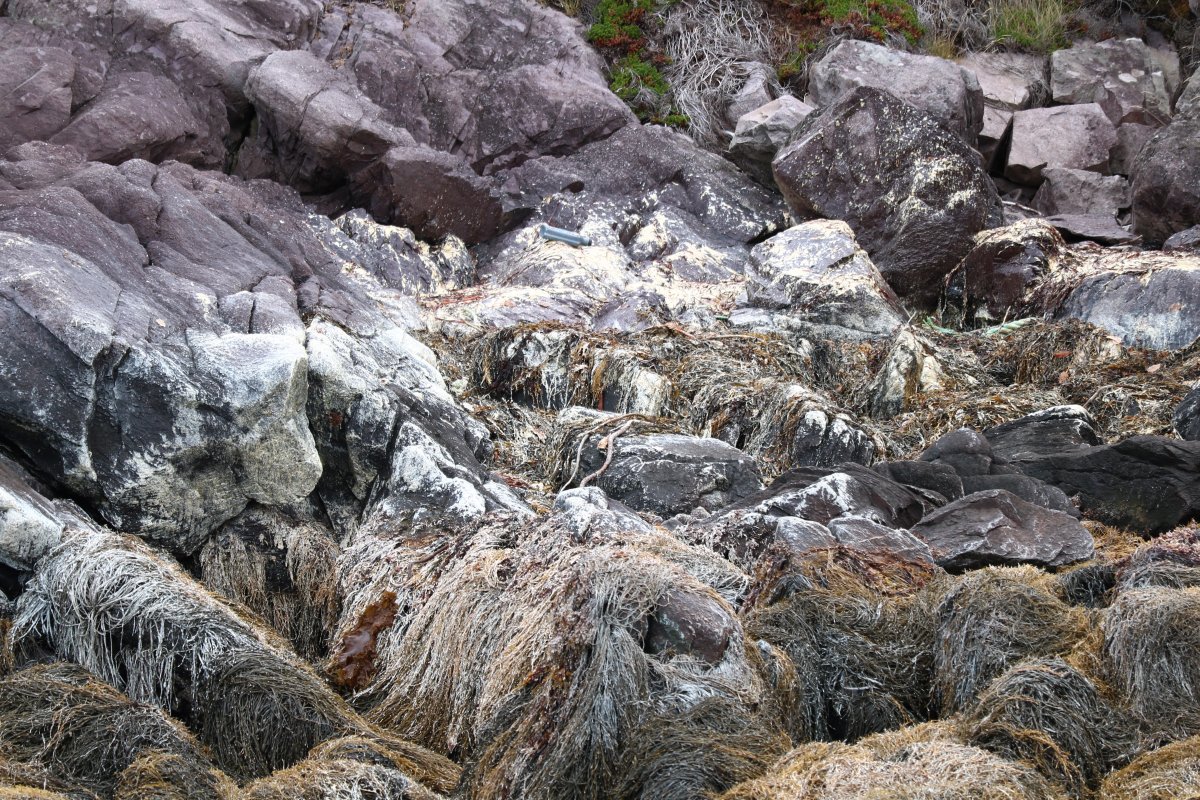Almost two months after millions of farmed salmon died in southern Newfoundland, concerns are still being raised about leftover residue from the dead fish lingering around the sea cages.

Northern Harvest Sea Farms, owned by Norwegian company Mowi, says 2.6 million of its fish have died since the beginning of September due to a long period of high water temperatures.
READ MORE: N.L. government urged to reassess aquaculture expansion after salmon die-off
Images of the messy cleanup and slow public disclosure of the incident have prompted environmental concerns and discussions about how the province’s growing aquaculture industry is regulated.
Bill Bryden of the Newfoundland and Labrador Coalition for Aquaculture Reform says he visited the area this weekend and saw solid, smelly salmon fat clinging to rocky shores.
Bryden, who shared images with The Canadian Press, described “ping pong ball-sized balls of fat” rendering into a liquid form.
He said he also witnessed what appeared to be a thin layer of oily liquid from the dead fish spreading through the water.
“It reeks,” Bryden said. “You’ll smell it from a mile away.”
Northern Harvest said Sunday it had removed all mortalities from the sites, and staff remain “focused on any remaining site cleanup activity.”
Spokesman Jason Card clarified Tuesday that Sunday’s statement was meant to share the “milestone” that all salmon mortalities had been removed from the cages, but acknowledged that some sites look better than others.
“The status of each site varies … but we’re committed to addressing the matter fully,” Card said.
He estimated response efforts would continue into November, including work on the shoreline and the use of booms to clean fat from the water.
He said the removed fish have been sent to a third-party rending plant to be used in fishmeal or fish oil, and the fat will be converted into biofuel.
Ian Jones, a seabird biologist at Memorial University of Newfoundland, said he’s skeptical of the term “cleanup” being used to the situation.
“Just dumping all the contents of your net cage into the ocean and letting it foul beaches is not a cleanup,” Jones said by phone on Tuesday.
“As biologists, we would be laughing if it wasn’t so tragic.” Jones said he’s been unimpressed with transparency from the event, with most information coming from the company rather than from government agencies.
“The size of what’s happened here seems to be huge,” he said. “We’re talking about thousands and thousands of tonnes of really quite nasty material that’s entered the ocean.”
READ MORE: Company says 2.6 million farmed salmon died in southern Newfoundland pens
Jones said the oily material from the fish poses a risk to seabirds if their feathers are fouled by the material, similar to an oil slick.
He also expressed concern that the decomposing fish would have produced hydrogen sulfide, a pollutant toxic to other wildlife, and the fact that photos suggest this material was dumped back into the ocean.
The Department of Fisheries and Oceans did not respond to requests for comment on Tuesday, and provincial Fisheries Minister Gerry Byrne said he could not comment on the status of work being done by federal bodies in response to the die-off.
Byrne said he’s been “seeking updates” from his federal counterparts for confirmation of environmental impacts.
“Obviously my preference is to hear from them as to what they find in the course of any review that they conduct,” he said.
This report by The Canadian Press was first published Oct. 29, 2019.




Comments